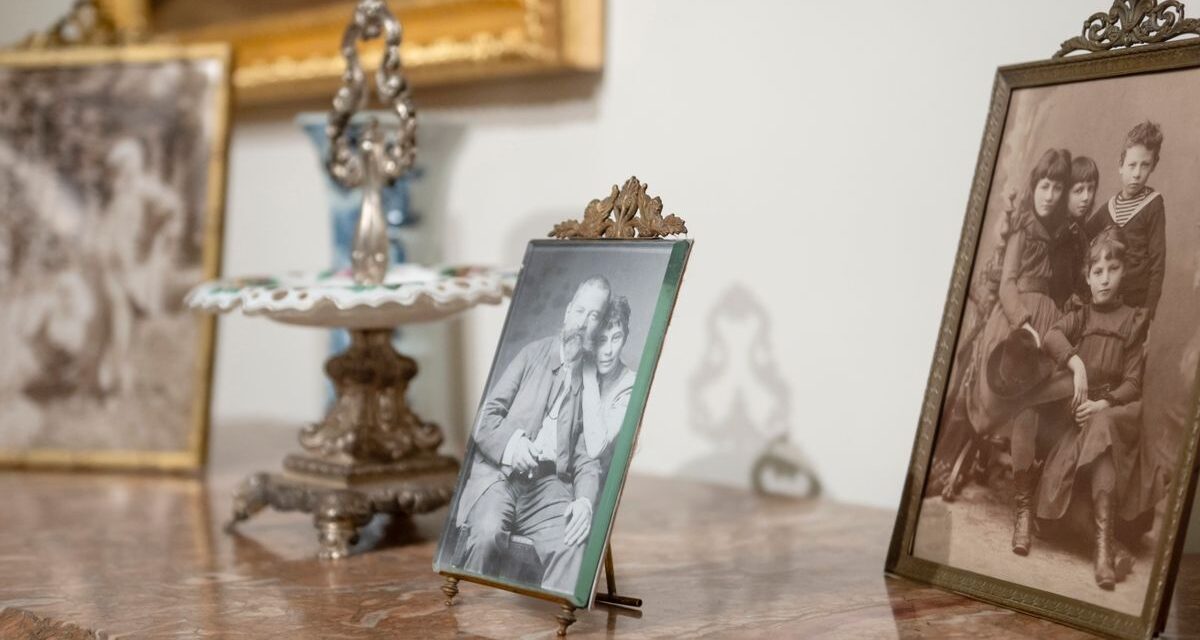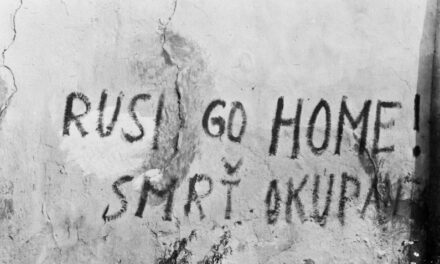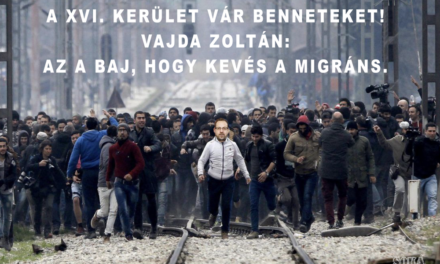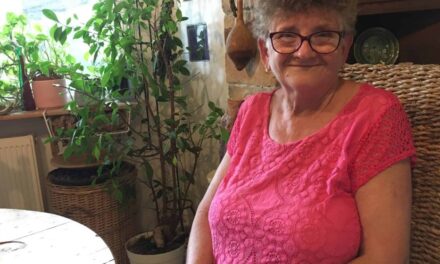Actually, everything started with Kálmán Mikszáth, that is, with his friendship with Gyula Benczúr.
The snow-covered Nógrád landscape is like an unreal winter wonderland. And a special heart-warming sight is the former summer residence of Gyula Benczúr. The Szécsény-Benczúr village manor house and its surroundings have been renovated within the framework of the National Castle and Castle Program, with a great Benczúr exhibition in the center, which has been open to anyone since last week.
Actually, it all started with Kálmán Mikszáth. That is, with his friendship with Gyula Benczúr. The writer "The last old or the first new" (János Háy) and the painter prince, who was also approaching the border of two worlds towards the end of his life, enjoyed spending time in each other's company. This is where Benczúr Mikszáth may have had the idea to find a new resting place for himself and his children in Horpác - the family used to vacation in Ambach, but after the death of his mother, Karolina Max, it became too painful to spend months in the town full of memories.
The shared dreams finally converged in Dolány - since 1927 in Benczúr village,
Benczúr and Mikszáth found a suitable estate here, with a spacious mansion that met all the needs of the Benczúr family.
The ground-floor, U-shaped building with a bun roof was built by the Wattay family in the 18th century. century; however, the painter had already bought it from Count Miko Pejácsevich together with the huge park area that belonged to it. By the time the business took off in 1910, Mikszáth died, but he liked the area in his own right - his family was from Kassa, he went to school there as a child - Benczúr took over for two years with renaissance and rococo furniture, adapted according to the plans of his brother, the architect Béla Benczúr , a residence furnished with art treasures, oriental carpets and own paintings. He had a spacious, bright studio built from the nearby granary, it was here that he completed his famous portraits, such as the one depicting Count Nándor Zichy and Self-Portrait with a Palette, among others, and here his emblematic works such as The Abduction of Europe, Orpheus and Eurydice or Christ on the Mount of Olives.
After the death of Gyula Benczúr in 1920, the castle unfortunately suffered a typical 20th-century fate in Eastern Europe. It remained in family ownership until the 1940s, in fact, the Benczúr girls operated a boarding house in it; a newspaper article from 1940 gives a good impression of the sophisticated and bourgeois conditions the guests could spend time here in, which is now almost unimaginable:
"Most of the furniture is also works of applied art and historical value, which Gyula Benczúr bought and collected little by little during his travels. Huge carved renaissance and baroque cabinets, one of which is decorated with extremely fine marquetry, itself II. It was used by Ferenc Rákóczi, the inlaid year indicates the time anyway. A fine-sized table was Countess Dubarry's writing desk, brought by Benczúr from Paris together with the other beautiful table in the middle of the interior great room, the salon, whose not only style but also its origin dates back to the 16th century. Louis contemporary. In the cabinet, the heavy pewter lead cups, bowls and an extremely graceful antique silver wall-mounted wash basin recall the great artist's Munich era. Every piece of furniture, furnishing, and artistic trinket has a story."

The renovated Benczúr manor in the Benczúr village of Szécsény on the day of handover, December 1, 2023. (MTI/Péter Komka)
By 1945, everything was over, the rooms were completely looted with the effective help of the Soviets, the legacy was scattered, and after the inevitable nationalization, a teahouse, cinema, school, and cultural center also operated in the house. Only the studio has preserved something of the glory of the past thanks to the older and younger István Szabó sculptors who often visit here.
After the regime change, it began to deteriorate for good,
abandoned property was saved at the twenty-fourth hour within the framework of the National Castle Program and National Castle Program.
The full-scale external and internal reconstruction took three years, more than one billion forints from non-refundable European Union funds.
"Thanks to this," said State Secretary for Architecture Regő Lánszki at the handover ceremony, "it was possible to save Benczúr Castle, which also plays a significant role in Hungarian cultural history, at the last moment." To save from erosion, to renovate the building, which has almost become a ruin due to the carelessness of the past decades. It is the task of our time not to find ourselves in such a situation again. In addition to renovating the monuments, we also take care of their maintenance. The past decades have proven that those monuments whose utilization has not been solved will sooner or later end up in an unworthy state again. This is answered by the law on the sustainable development of certain elements of cultural heritage, which aims to breathe new life into the spirit that created these beautiful buildings."
The central element of this new life and, with it, the hoped-for long-term sustainability, is the large-scale exhibition that opened with the handover, where, in addition to the eighteen original Benczúr paintings, family relics, draperies from his own textile collection, as well as photos and reproductions are also included. The exhibition titled The Image Writer - Approaches to Gyula Benczúr uses modern technical tools - a sound installation that collects contemporary criticisms in a bouquet, a touchscreen solution that guides you through the multitude of portraits, etc. - shows the conservative artist ("the last princely representative of Hungarian historicizing academic art") and "how he was also occupied with the questions of the nascent modern art". The latter, i.e. the capture of the momentary, the expression of the harmony of nature and intimate intimacy, appear mostly in the sketches made for "internal use", as experiments.

The renovated Benczúr manor in the Benczúr village of Szécsény on the day of handover, December 1, 2023. (MTI/Péter Komka)
In this way, we can get to know more of Benczúr's faces than usual, and moreover, in the welcoming environment that he once felt and loved so much. In some cases, the recognition is literal: on the rotating blackboard wall of the Faces of the Soul room, for example, we can see different self-portraits, and thus roles.
At other times, the master who sees the task of the painting primarily as delight comes to the fore
through images bearing the stylistic features and metamorphosis of the Baroque and Rococo, such as Among the Mallows or The Couple in Love. In the largest, central room of the exhibition, a reduced noble copy of one of the most famous Benczúr paintings, The Recapture of Buda Castle from the Turks in 1686, was placed. On the opposite wall, the XVI. The arrest of Lajos and his family, as well as its emotional sketch, answers.
During the reconstruction, new service areas were also created: the reception area was completed, there is a cloakroom, a cafe, a gift shop, the water blocks were renewed, the immediate surroundings were reborn, the garden road network was renewed and a visitor parking lot was also created.
"The Benczúr mansion is unique among NÖF facilities, as it did not become well-known because of a historical family, but rather it is linked to an iconic artist whose influence can still be felt in Hungarian painting. Continuing the intellectual legacy of Gyula Benczúr, our goal was to create a community space in the environment he dreamed of, where many branches of fine art can be displayed,
and which can become a place of pilgrimage for visitors receptive to painting.
This building can host cultural and art programs, creative camps, art workshops and occupations," emphasized Zsanett Oláh, NÖF Nkft, responsible for the development of national heritage protection. executive director at the opening.












